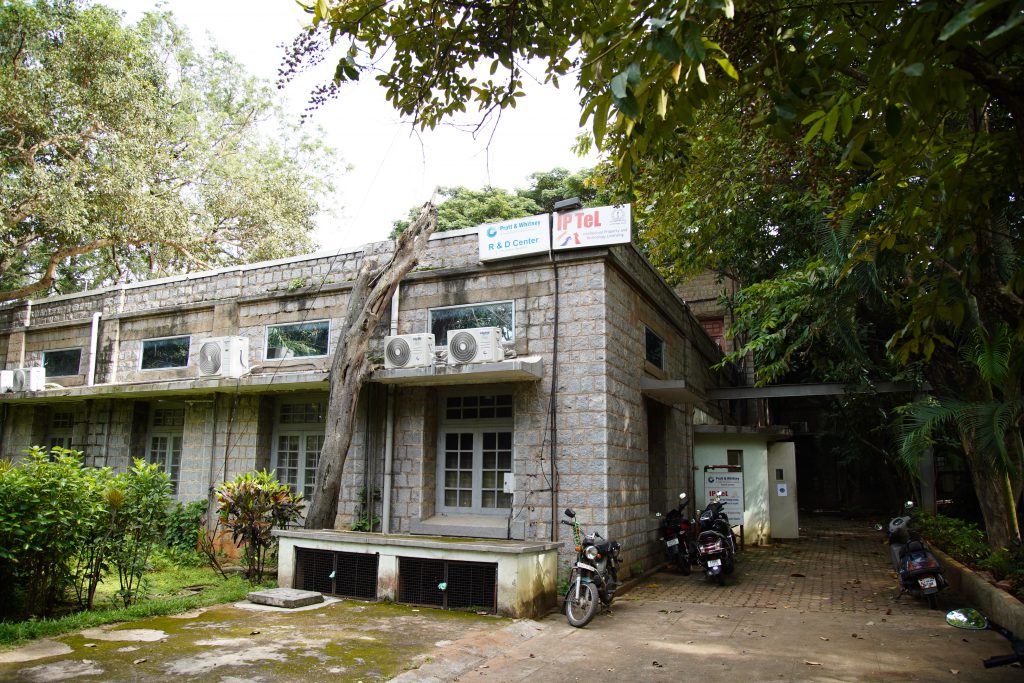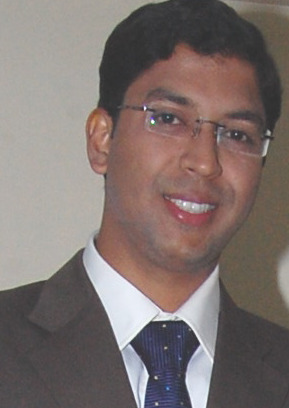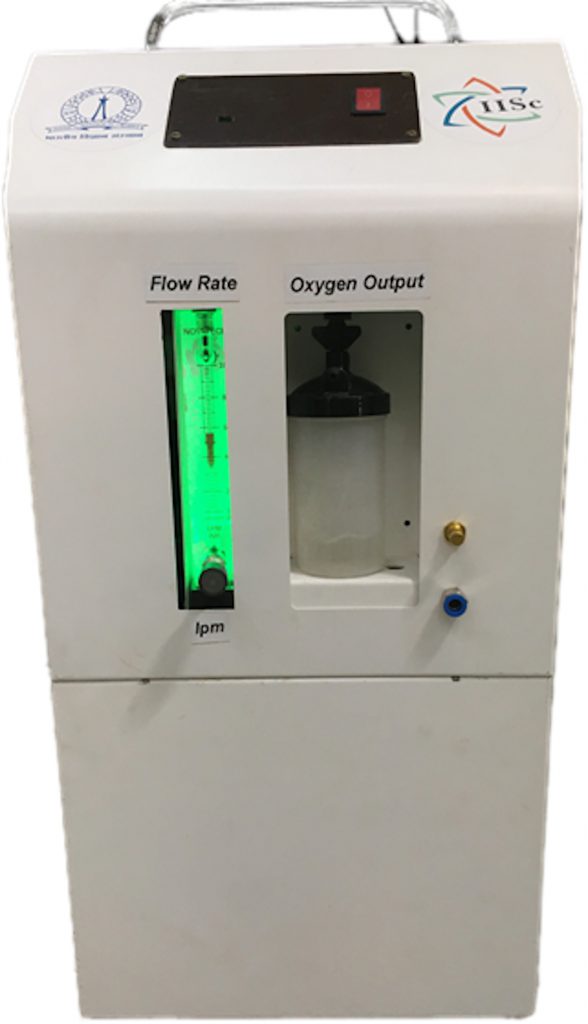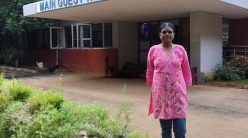Patenting – getting legal rights over one’s invention – continues to be a tedious process within Indian universities and there are many unanswered questions about the process. CONNECT sat down with Suryasarathi Bose, Associate Professor, Department of Materials Engineering and Chair of the Office of Intellectual Property and Technology Licensing (IPTeL), and office manager Vijay Singh to understand how patenting works at IISc.

The IP Cell was founded in 2004. What was the motivation behind its establishment?
Suryasarathi Bose: The primary objective of the IP Cell was to facilitate all the intellectual properties generated in the institute; to file them and to see if there are companies interested in licensing them. But the IP Cell has journeyed a long way and we are now the IPTeL because our objectives have widened. We also educate faculty members about properties they are sitting on that need to be filed, and about the fact that these technologies could be licensed to different companies. This process has generated a lot of interest among the faculty members because every technology they produce can be picked and protected and these technologies could be useful for the future as well.
We are also actively involved in the transfer of technologies to different companies. These companies are sometimes identified by the faculty members themselves. We have a great database of companies who regularly come in for different technologies. There are significant efforts invested in matchmaking between technologies and suitable companies. That is why the IP Cell became IPTeL because the objective also widened from going beyond the process of reviewing and filing [patents]. The process of searching for a suitable licensee has proved to be equally important.

(Photo courtesy: Suryasarathi Bose)
Over the years, what have been the main challenges faced while evaluating, protecting, and licensing intellectual properties?
Suryasarathi Bose: If we look at the major institutes in the world, like the National University of Singapore for example, they have an intermediate lab which focuses on improving the level of the technology that a faculty member has developed to a much higher level before it gets considered for licensing. This is called the readiness level and industries look extensively at the ‘technology-readiness level’ before the technology can be taken over. These industries try to see if the respective technology is ready to go into the market or if it is still in the laboratory stage. If it’s in the laboratory stage, many of these licensees would not want to take it up, or some of them offer to work closely with the faculty member to see if these technologies can be enhanced. We do not have such incubation labs to nurture the market readiness of the technologies that we wish to license.
If we have a similar model here at IISc with a research park where a set of engineers can take a particular technology and work on it to increase its readiness level, this can garner better results in terms of patenting more technologies over time.
The other challenge we see is that if we need to get these technologies to higher scale technology-readiness levels that are more durable and marketable, then we need substantial grants which we do not have right now. If the research path is being embedded in IPTeL, then another set of engineers and scientists needs to work on the process of identifying and engaging with licensees. We are not equipped with such funding or modelling in our institute yet. We have just begun having conversations, in the hope that we can implement such a model in our campus in the future. These models would certainly benefit us as they have already benefitted other institutions such as National University of Singapore.
How is the process of filing a foreign patent different from filing an Indian patent? What are the specific challenges involved?
Vijay Singh: Foreign patenting is expensive compared to filing patents in India. While filing for foreign IPs, there are two processes we mainly follow. One is to directly identify and file with the country we wish to get our IP patented from. The other way of filing is to do it via the Patent Cooperation Treaty (PCT). This process takes around 18 months to choose which country and company we can file our patents from, and upon identifying the licensing partner, things move forward.

Typically how long does it take to file a patent or licence a technology?
Suryasarathi Bose: It always differs on a case-by-case basis. Once a technology is discovered, say a new drug molecule by a faculty member, then we will go ahead and file a patent. But if the same drug molecule is to be licensed by a famous pharmaceutical company, then the company would like to see whether there have been some trials and successful models that the drug has been able to gather. This journey is going to be long if we consider the field of drugs or biology. But when it comes to the field of material sciences, this journey is shorter. We can show the properties of a new material and the company will independently verify these properties from a lab to certify the material before it gets taken into the market.
Hence, licensing operations remain vastly different. In some cases, coding alone would be licensed whereas in other cases it would only be the software. In such processes, the journey of licensing is even shorter. Materials and life sciences are the fields where we cannot really predict an accurate duration for the process.
How does IPTeL reach out and work with potential industry collaborators who are interested in commercialising and licensing IISc’s patents or products?
Suryasarathi Bose: Most often, these technologies come out from joint or funded projects. When I say joint, it could be a project where the industry and the faculty member work towards the same technology. When it is an industry project and there is substantial intellectual input from the industry and the faculty member, these technologies tend to reach the market faster. Sometimes, the technology could have stemmed from a government-funded project. In such cases, where there are no industrial partners involved, then IPTeL’s key role is to get a licensee on board. We already possess a database of industries interested in acquiring these technologies from us based on our prior experiences. We are expanding this database so that every time a new technology arrives, there is a certain ease in trying to map to a suitable licensee. This is one of the main initiatives undertaken by IPTeL.
A second initiative we have begun is engaging with firms whose primary goal is to take an IP and look for a licensee. There are firms with whom we have already started engaging; they try to make matches for the intellectual properties we provide and we try to negotiate the licensing terms and agreement with the potential licensee.
How does IPTeL support faculty members and researchers through the process of patenting and commercialisation?
Suryasarathi Bose: IPTeL has started helping faculty members and researchers in drafting their claims and we have firms that help us in these processes as well. The main efforts are towards trying to map and identify a potential licensee for the technology in question. We also work closely with the Government of India’s Technology Development Board (TDB).
There are two technology incubators at IISc. One is at the Centre for Product Design and Manufacturing (CPDM) and the other one is at Centre for Nano Science and Engineering (CeNSE). They also have a large database of companies, and we try to regularly engage with them so that we are able to get wider publicity for the IP and succeed in patenting it with the right licensee. In this way, we support many faculty members and researchers who do not have licensees yet.
How does IPTeL increase awareness amongst students and researchers about IP rights and policies?
Suryasarathi Bose: We conduct IP awareness seminars. A couple of these seminars will take place in the near future. Our manager, Vijay Singh is instrumental in organising these IP awareness seminars. He educates and sensitises our postdocs, senior PhD students and faculty members about IP and why it is important to protect our IP before we make it available to the public.
There are successful models in top USA universities where these universities are run with the revenue generated from the licensing of their IPs. Our revenues are not that large yet, but through our seminars, we are trying to sensitise how initial revenue can be generated from the IP we are already sitting on. This information enables our postdocs and senior PhD students to see that their work may fetch revenue for the Institute during times when the funding from the government is becoming tighter and tighter. This path of generating revenue can become a sustainable and lucrative model for the institution as well.

What are some of the recent inventions that got patented through IPTeL?
Suryasarathi Bose: Two major inventions from the Institute that helped the country a lot recently during COVID-19 were the oxygen concentrator and the oxygen generation system. When the country was facing an oxygen cylinder shortage during the second wave of the pandemic, this technology aided hospitals and healthcare workers tremendously. These technologies were essential during those times and it is currently installed in many hospitals across Karnataka. But we did not garner much revenues from this technology as the goal at that point was to save lives. It was developed at IISc for societal benefit and immediately got pushed into the market without any thought about the rates of revenue that could be generated.
A company from North Karnataka recently approached us to take the oxygen concentrators and generators to remote areas as they aspire to establish an oxygen grid for the nation.
The Division of Mechanical Sciences has been the most active division in filing their IPs and getting them licensed. They have been successful in generating great revenue as well. Other divisions are also active but mechanical sciences occupies the top position.

Could you highlight some key examples of IISc patents or licensed technologies that have made a significant impact in their respective markets?
Vijay Singh: A majority of the IP that comes out of the Institute has a relatively lower technology-readiness level. It takes considerable time and effort for the companies to scale up these technology-readiness levels to go to the next stages of patenting and licensing processes.
Some IPs, like the one for obtaining silica from rice husk and a process for removing hydrogen sulfide from industrial wastes, developed by NKS Rajan, Principal Scientist at IISc’s Department of Aerospace Engineering, did really well and are quite popular. Of course, IISc was the owner of this IP but recently we transferred it to Rajan’s start-up, Mithra Increst. Satheesh C Raghavan, Professor at the Department of Biochemistry, had identified a small molecule inhibitor – SCR7 – as part of his work on cancer therapeutics. This invention gained significant attention from and got patented in both India and the USA.

(Photo: KG Haridasan)
What does a typical day in the office look like?
Suryasarathi Bose: We have a large office with five to six office staff and one IPTeL manager who tries to arrange these quick reviews for the IP applications that we receive. Based on the review process, we assign it to an attorney who works with the faculty member in understanding and trusting the claims associated with the process and in finally filing the claim.
We have an active WhatsApp group where we discuss the challenges daily, and once a week, we meet in-person to discuss the licensing types, the new IPs that are getting filed, the negotiations, licensing agreements and so on. We also have a think-tank that helps us to brainstorm possibilities and actions based on the challenges that we face.
The think-tank panel meets occasionally to see how we can expand the scope of IPTeL, how we can bring more revenue to the Institute through licensing and royalties, how to file more IPs that have societal relevance, and to discuss if we can change the current model in place to accommodate a better revenue-generating model.




